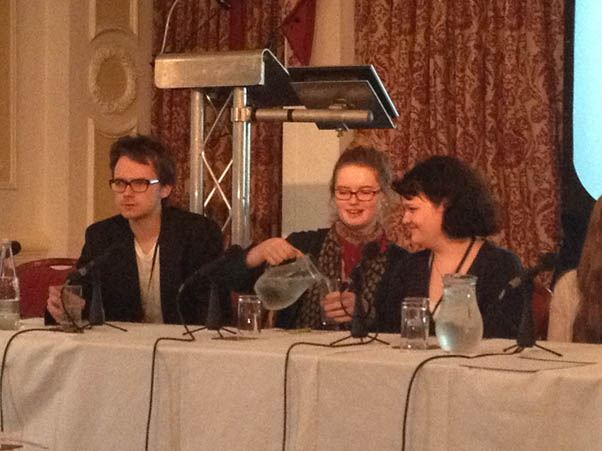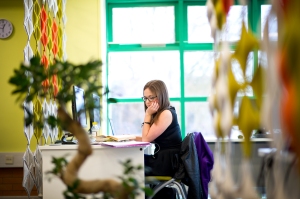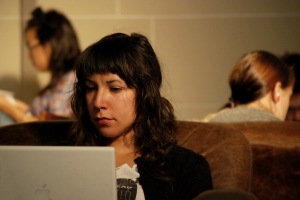 This post is a continuation of last week’s post in which I described how, with no money and very little time, I successfully used a small survey and some ethnographic techniques to sharpen the discussion about students’ technology and study-space needs at my college. It was remarkable how in very little time, such techniques illuminated a host of previously unconsidered issues and heightened awareness of things that could be changed. In this post, I discuss specifically the ethnographic techniques that I used.
This post is a continuation of last week’s post in which I described how, with no money and very little time, I successfully used a small survey and some ethnographic techniques to sharpen the discussion about students’ technology and study-space needs at my college. It was remarkable how in very little time, such techniques illuminated a host of previously unconsidered issues and heightened awareness of things that could be changed. In this post, I discuss specifically the ethnographic techniques that I used.
Cognitive Maps
At the end of the computer-room survey (discussed in last week’s post), I asked if the students would be interested in doing a quick 10-minute follow-up interview with me, and about a third said yes. I felt strongly that there was likely more to be said about their use of the computer room than my simple survey could get at. I’ve been inspired lately by the idea of cognitive mapping, discussed by anthropologists Donna Lanclos here and here and Andrew Asher here and here as a quick, efficient way of describing students’ ‘learning landscapes,’ i.e., all the places where they do their academic work and why. What combination of factors contribute to making a decision about where and how to do work? My recent reading about digital literacies, and everything that I have ever studied about anthropology, led me to think that the answers were going to be interestingly, deliciously complicated and all different.
I was not disappointed. I used a structured 6-minute exercise in which I asked students to draw a map of all the places where they do their academic work, switching pen colour every 2 minutes, starting with the red pen, so as easily to be able to see the most important places first (the assumption being the first thing students draw would be the most important to them). I also followed up the exercise by doing a short interview where the student labeled the map and discussed the various points on it. The maps were beautiful and illuminating and clearly showed that even if students are using the same space, their reasons for doing so, how they feel about the space and how they make it uniquely their place is based on a combination of many factors: Discipline, degree, nature of work undertaking, maturity, age, preferences, availability of electrical outlets, proximity to amenities such as water and loos, proximity to friends and/or other people, availability of comfortable seating and/or natural light, noise level and very intriguingly to me, memories and/or associations with a space.
For example, we have a popular common room in the college where I work which looks like a nice, simple living room:
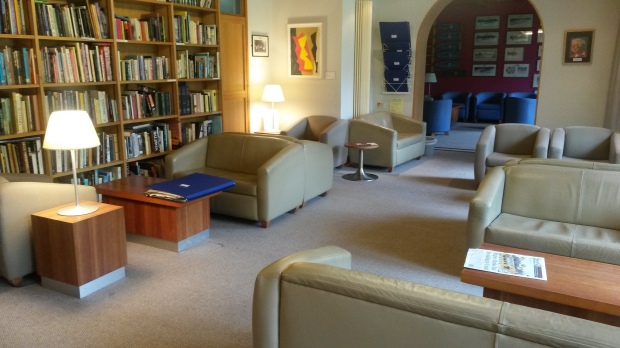
Who wouldn’t want to work there? But students tend to feel passionately one way or another about this place. It is far more politically fraught than you might think. Here are two maps, both of which have indicated that this room is a place where they often do work (the room is KSJ or Karen Spärk Jones room on the maps):
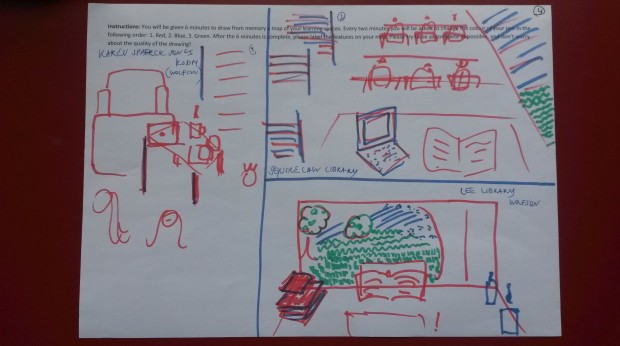
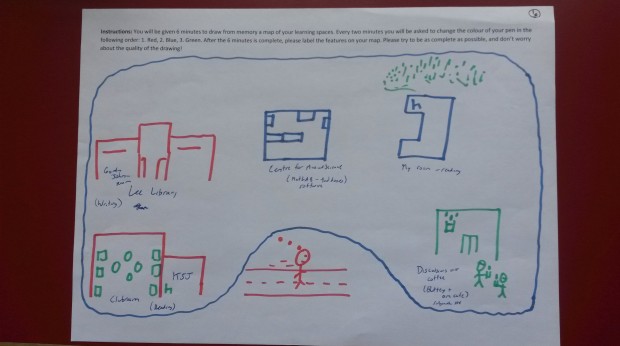
The first student loves this room because she can sit comfortably with her laptop near a window all day, have coffee, and be around other people. The second student finds the room quite stressful: There are tensions for him about whether he can talk in the room or not (technically, you can talk there, but in practice it’s usually so silent that one generally feels uncomfortable doing so). He also feels a bit stressed out by the coffee machine, because it’s not clear how to work it and you have to purchase coffee for it upstairs at the canteen (when it’s open). Another student I spoke with just will not work in there at all because she associates the space with her interview day at the college (where it acted as a waiting room), and yet another student loves the place because a few years ago, he used to socialize often there with friends. Two other students I interviewed both find the furniture in the room incredibly uncomfortable: tables too low, backs of sofas too hard, etc.
Without taking the time to talk to students and really probe why and for what reasons they made a choice about work spaces, none of the problems, tensions and politics of this room would have been shown up. Indeed, until now, I had always showcased this room as an example of the sort of spaces that we need more of around college.
In just 10 of these mapping surveys, the amount of data that I got was so rich, it was stunning. These were interviews with students who were all relatively heavy users of the library’s computer room, and yet what they were doing in there and what they subsequently did afterwards, where and why were very different and complicated.
Closing Thoughts
As I do my daily rounds in my library and observe students working, it’s easy to fall back on assumptions about how they work and what their needs are. It’s exam time at Cambridge this term, and here are three usages of space in my library right now:
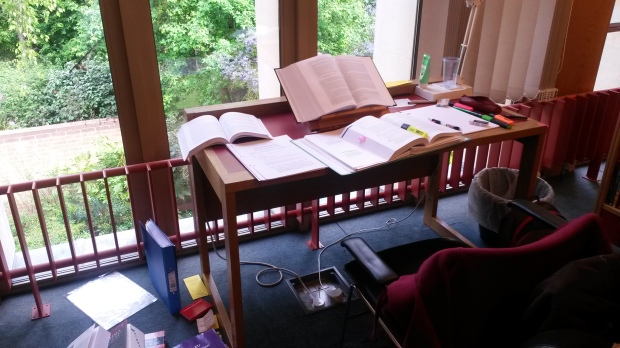
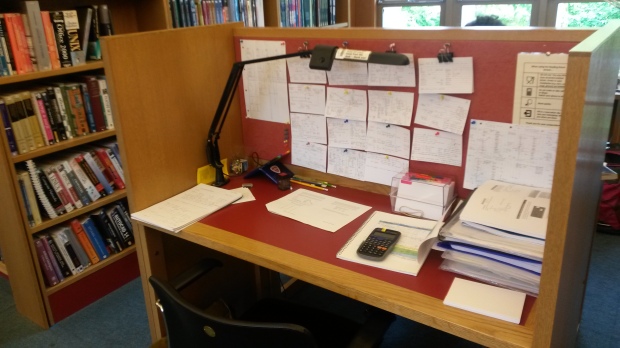
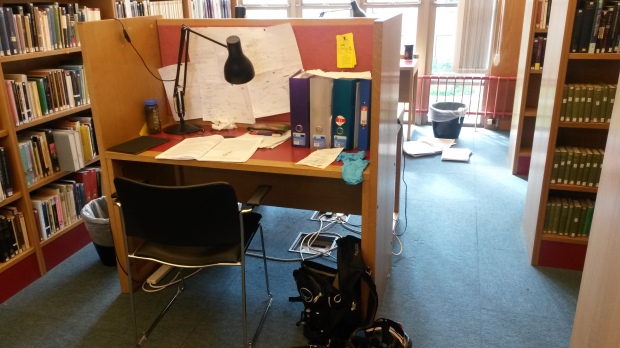
Students have colonised these spaces, making them mini-offices and storage places, and it’s quite easy to label the usage with any number of simplistic stereotypes (like colonisation, for example). But it is important for me to realise that this usage is actually quite complicated and hardly neutral: it’s a combination of needs-meeting, performance for self and other students, and negotiation with limitations (perceived or real) of the space. Each student makes the space his or her place in different ways, for highly personal reasons. As I interact with students and design library services, I must keep this complexity in mind, for otherwise I will end up creating policies that are not flexible enough to meet a wide variety of their needs.
The small-scale study I did illuminated a complicated set of behaviors and will forever change how I think about the students who use my library. My hope is to build on the data this summer, perhaps concentrating on PhD students and/or investigating more closely students’ work flows for completing assignments.
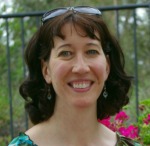 Meg Westbury
Meg Westbury
Librarian and Fellow, Wolfson College, University of Cambridge
mw528 at cam dot ac dot uk
@megwestbury
LinkedIn
Image credit: UBC Library Communications via Flickr
